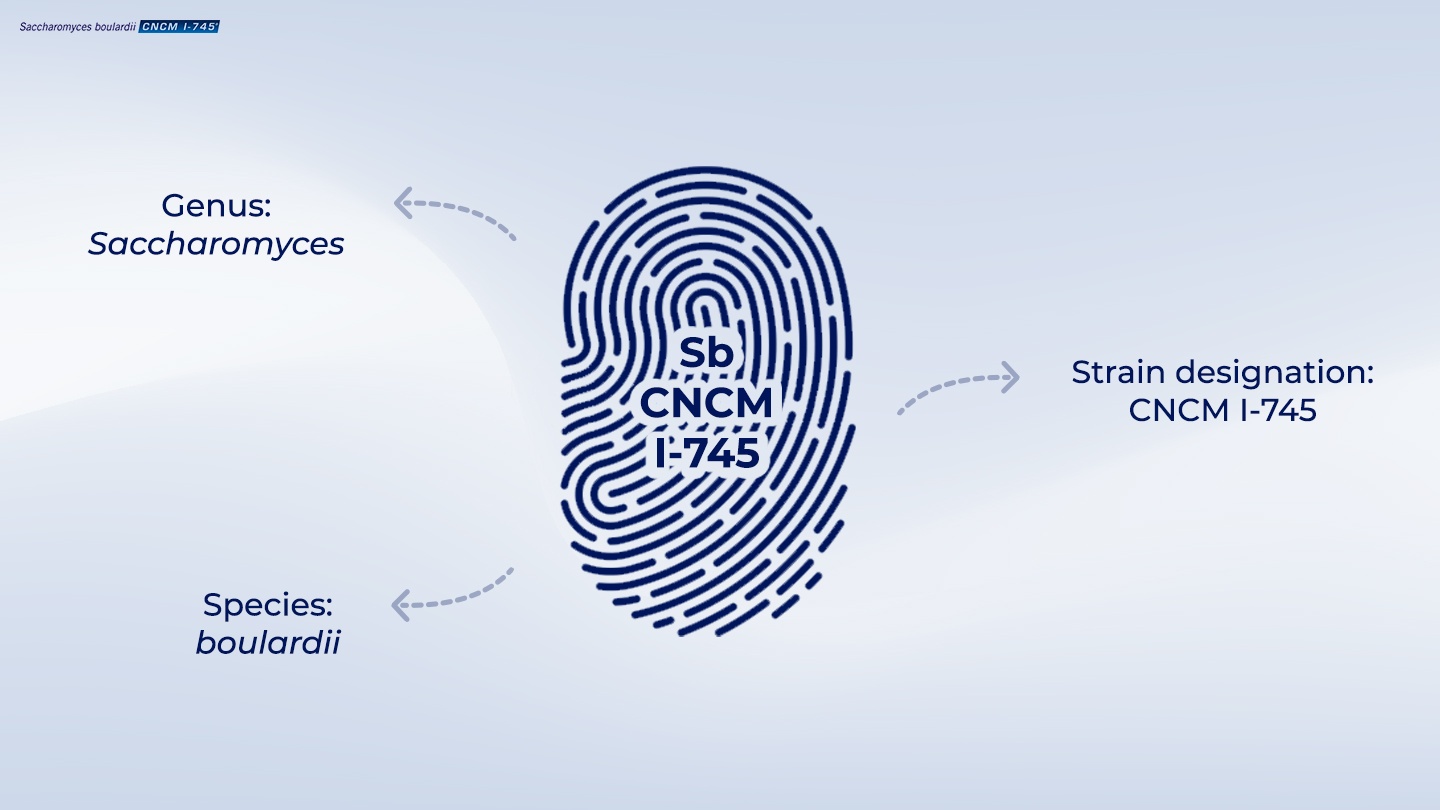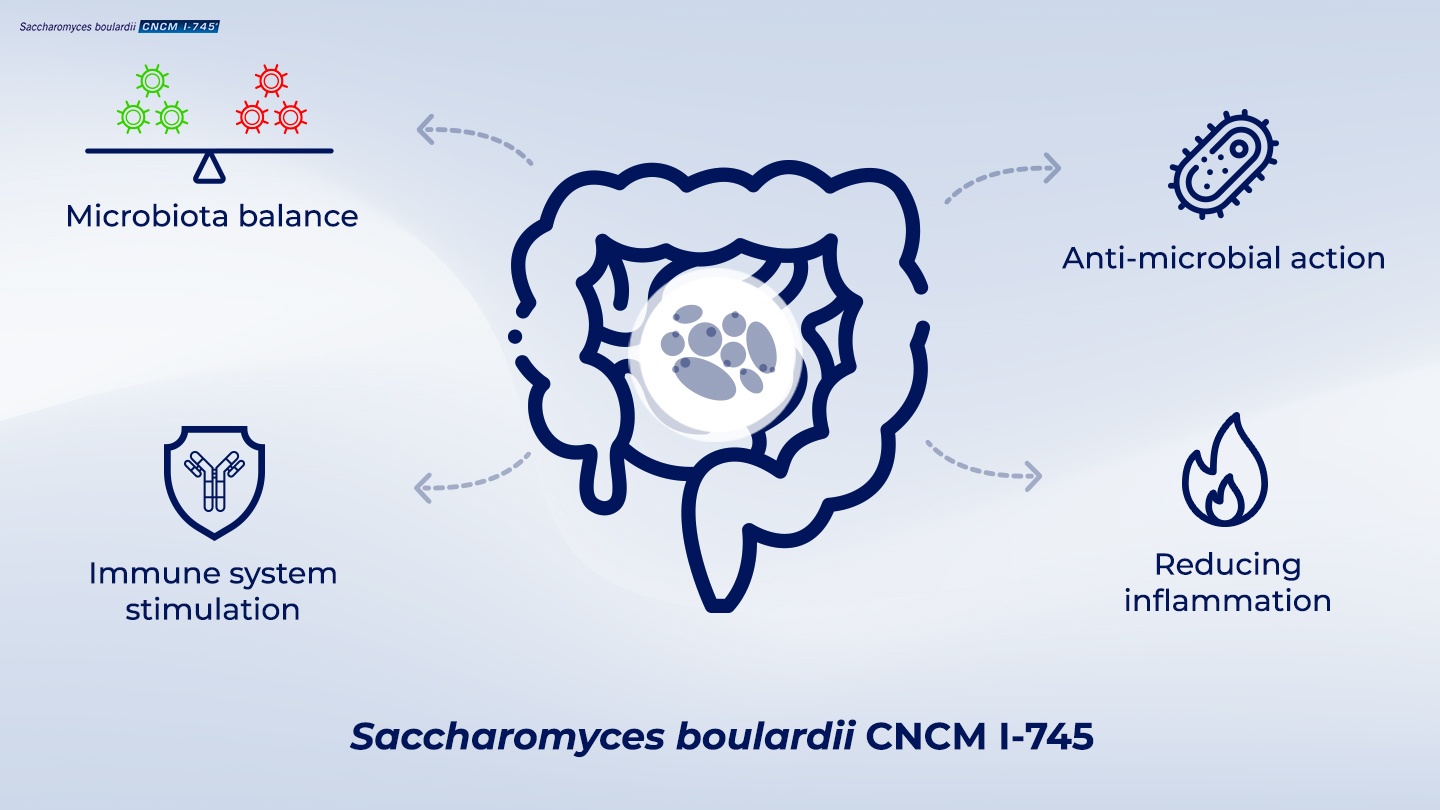Saccharomyces boulardii CNCM I-745 is a unique, single strain yeast probiotic
- Video
- 3 min
Not all probiotic strains offer the same health benefits
Some probiotic preparations can have more than one strain.1 This means that it can be difficult to know which strain contributes to which health benefit that the preparation offers.1,2
The health effects that can be linked to a particular strain fingerprint is called “strain specificity”, and is very important as sometimes there can be big differences between probiotic strains of the same species.1
It is so important to connect the health effects of a probiotic to the exact strain that has been studied, that it is now recommended by expert organisations to always include the strain designation of the strain when discussing the health benefits that a probiotic preparation offers.2
Saccharomyces boulardii CNCM I-745 is a unique single-strain yeast probiotic that has more than one role when it comes to gut health
Saccharomyces boulardii, a single-strain yeast-based probiotic originally isolated from the skins of mangosteens and litchis1, is linked with many different health benefits3, and is not found in the normal gut microbiota population.3
Almost all studies that have been conducted on S. boulardii have been performed with the unique strain designation Saccharomyces boulardii CNCM I-745.3

(Internal code : 20.60)
More than 100 clinical studies have been performed with this unique strain.
Because of the number of studies that have been performed with S. boulardii CNCM I-745, it means that the strain-specific health effects experienced in the “real-world” can be linked directly with this unique strain fingerprint. S. boulardii CNCM I-745 is considered a probiotic drug due to the strength and quality of the scientific and clinical evidence demonstrating the gastrointestinal benefits offered by this unique yeast strain.1 This unique strain has been demonstrated to address the causes and symptoms of diarrhea as well as gut microbiota imbalances via multiple specific mechanisms of action that include anti-microbial activity, stimulation of immune responses, reduction of inflammation, and the restoration of the balance of normal microbiota composition and diversity that helps restore normal gut functioning.1,3

(Internal code : 20.60)
These proven multiple health benefits mean that the unique single-strain yeast S. boulardii CNCM I-745 is a complete solution to prevent, treat and aid recovery from diarrhea and its causes.2,3
Internal code : 20.34
References
- 01 . Joly, F et al. Gut Microbiota: A full-fledged organ. 2017. Marteau, P and Dore J (Ed.). Paris: John Libbey Eurotext.
- 02 . Guarner et al. Probiotics and prebiotics. World Gastroenterology Organisation Global Guidelines. February 2017. https://www.worldgastroenterology.org/guidelines/global-guidelines/probiotics-and-prebiotics/probiotics-and-prebiotics-english. Last accessed 14th November 2019.
- 03 . More MI, and Swidsinski, A. Saccharomyces boulardii CNCM I-745 supports regeneration of the intestinal microbiota after diarrheic dysbiosis–a review. Clinical and experimental gastroenterology. 2015; 8: 237.
